Here’s the Sea Creature That Best Represents Your Myers-Briggs® Personality Type
Updated July 5th, 2025.
In this article, we’re embarking on a playful and informative “dive” (no pun intended) into the deep blue sea. Using the Myers-Briggs® personality type, also known as MBTI®, we will match each of the 16 distinct personality types to a unique sea creature. Just as the ocean is full of vibrant and diverse life forms, so too is the world of personalities. Whether you’re an INTJ, ESTP, or somewhere in between, there’s a fascinating sea creature that shares some of your unique attributes. So, let’s dive in, explore the depths, and discover what sea life you resonate with based on your MBTI® personality type!
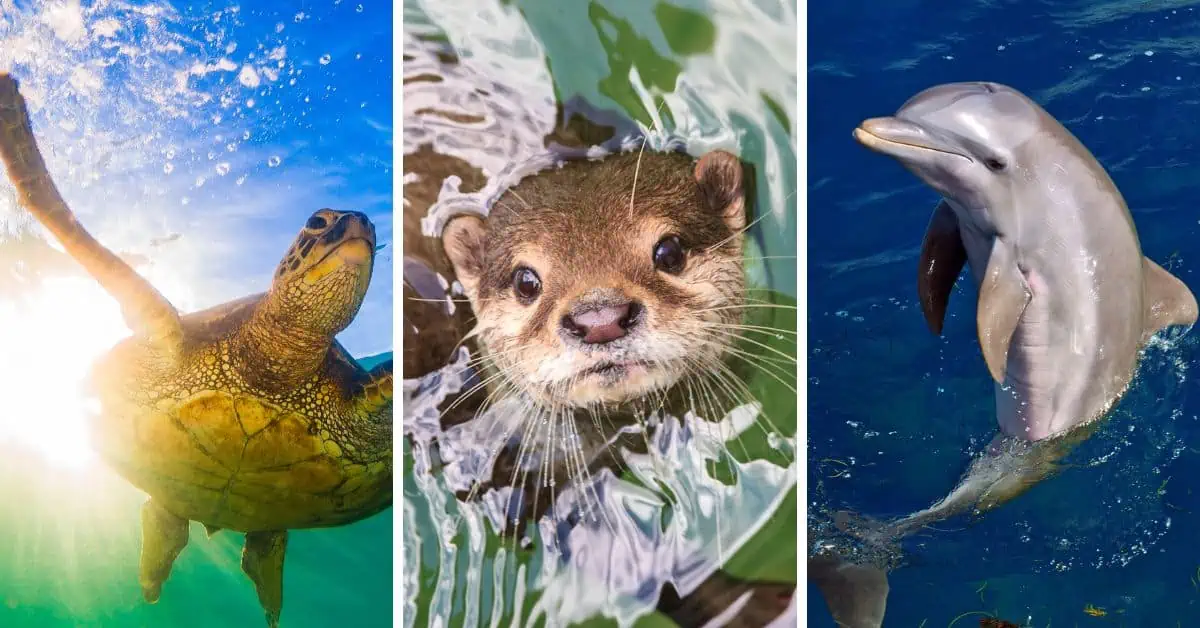
Not sure what your personality type is? Take our in-depth personality questionnaire here. Or you can take the official MBTI® here.
Estimated reading time: 21 minutes
The Amazing Sea Creature with Your Myers-Briggs® Personality Type
The ISTP – Sea Otter
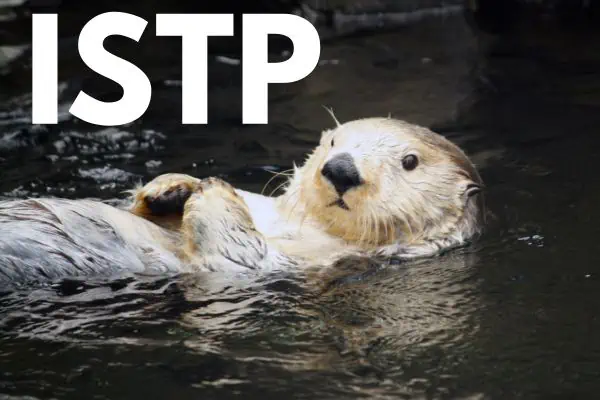
If ISTPs were sea creatures, they’d be sea otters—small, adorable chaos mechanics who use rocks as tools and are as dangerous as they are adorable. Give a sea otter a clam and a rock and five seconds of silence, and they’ll crack open dinner like it’s a safe heist. Not because it’s fun (though maybe it is?) but because that’s how they think—with their hands. ISTPs operate on that same wavelength. They don’t want to sit in a meeting and brainstorm about the theory of the thing. They want to take it apart, poke at it, fix it, break it again just to see what happens, and then disappear.
They’re solitary, quiet, and oddly competent in ways that make you feel like maybe you missed some key instruction manual on life. Meanwhile, they’re just floating there, cracking crabs open with their rock-tool of choice, minding their business and lowkey judging yours.
And sure, sea otters are cute—but you can’t hug one. They’ll bite. They like their space. ISTPs are like that too. Give them too many social obligations and they’ll vanish into the wilderness with nothing but a multitool and a vague grudge against the meddling people in their lives.
TL;DR – ISTPs and Sea Otters:
Use tools like it’s second nature (because it is).
Adapt quickly and efficiently to whatever’s thrown at them.
Prefer doing over talking.
Curious and intelligent.
Solve problems quietly and effectively—then vanish into the waves.
Find out more about ISTPs: 24 Signs That You’re an ISTP, the Vigilante Personality Type
The ISFP – Leafy Sea Dragon
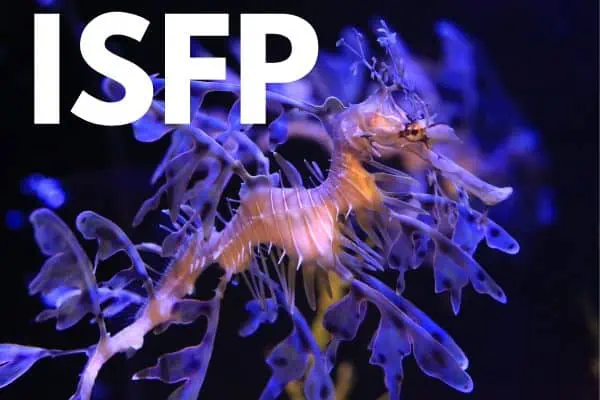
If ISFPs were sea creatures, they’d be Leafy Sea Dragons—otherworldly, beautiful, and almost impossible to pin down. You don’t see them unless they want to be seen. And even then, you’re not quite sure what you’re looking at—an animal? A drifting plant? A work of art that decided to grow fins?
Leafy Sea Dragons move through life with the same quiet grace as ISFPs. They blend in, not because they’re trying to hide, but because they’re too sensitive for drama and chaos. They observe, adapt, and respond with elegance. And that’s the ISFP in a nutshell: making the world more beautiful just by being in it, no announcement necessary.
TL;DR – ISFPs and Leafy Sea Dragons:
All about the details—even their camouflage is aesthetic.
Elusive, private, and impossible to box in
Graceful adapters who notice what others overlook.
Express themselves through beauty, not noise.
Mysterious but magnetic—if you’re lucky enough to catch a glimpse
Discover more about the ISFP: The ISFPs Cognitive Function Guide
The INTP – Caribbean Reef Squid
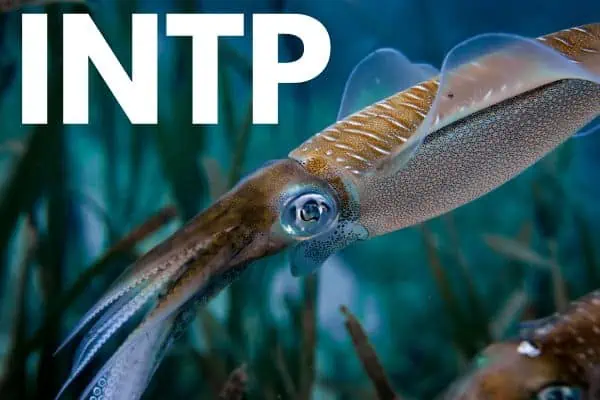
If INTPs were sea creatures, they’d be the Caribbean Reef Squid—part alien, part genius, part introvert with zero interest in small talk. These squid aren’t just floating blobs with tentacles; they’re some of the smartest invertebrates in the ocean. They communicate using patterns of color, brightness, and even polarized light—basically Morse code meets mood ring meets quantum physics.
Sound like anyone you know?
Like INTPs, these squid don’t blurt things out. They think in systems, signal in subtleties, and only get weirder (and more impressive) the closer you look. They’re not trying to fit in—they’re busy analyzing, observing, and inventing new ways to exist. And just like your favorite INTP, they need alone time like oxygen. Socializing is fine… in short bursts. Then it’s back to their underwater lab to decode existence.
TL;DR – INTPs and Caribbean Reef Squid:
Wildly intelligent, but not always understood.
Communicate in complex, abstract ways (good luck decoding).
Thrive on solitude.
Adapt fast—but only on their own terms.
Secret geniuses with a flair for the strange.
Want to find out more about INTPs? The INTP Cognitive Function Stack
The INFP – Manatee
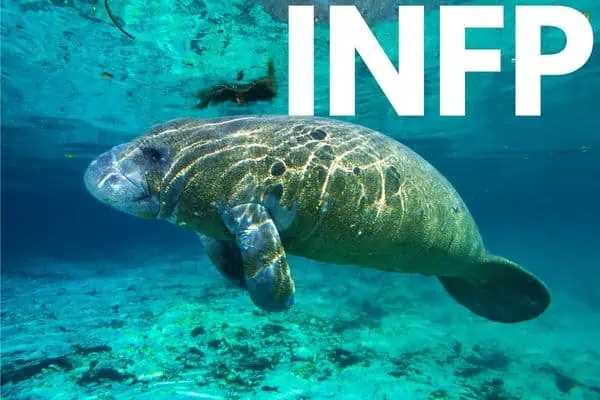
If INFPs were sea creatures, they’d be manatees—soft-hearted, slow-moving philosophers drifting through warm water with zero interest in climbing any ladder unless it leads to inner peace. Manatees aren’t flashy. They’re not out here doing tricks or picking fights. They just want peace, sunlight, and the freedom to float.
Like INFPs, manatees need a warm, nurturing environment to truly thrive. They don’t do well with cold waters or cold people. Give them space, kindness, and quiet, and they’ll surprise you with their depth. While they look like they’re just relaxing, they’re actually on a quiet quest to discover more meaning. That’s the INFP life. Wandering, wondering, never in a rush—but always searching for meaning. Their exploration is ideally slow, sacred, and purposeful.
TL;DR – INFPs and Manatees:
Sensitive souls who need warmth (literal and emotional).
Peaceful, introspective, and allergic to loud, competitive nonsense.
Always seeking something deeper—even if they look like they’re just floating.
Travel far, but not fast—purpose matters more than pace.
Gentle explorers of both the sea and the self.
Find out more about INFPs: 13 Remarkable INFP Anime Characters
The ISTJ – Sea Turtle
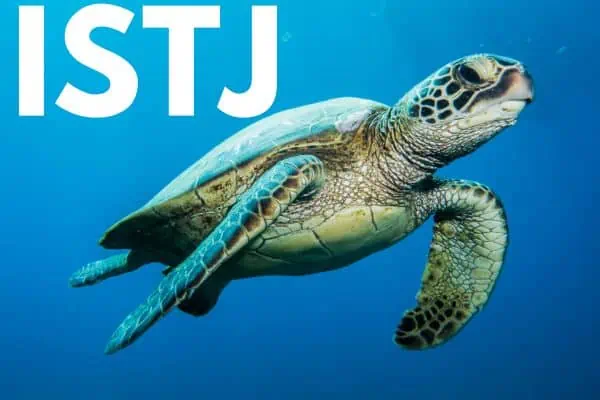
If ISTJs were sea creatures, they’d be sea turtles—ancient, unbothered, and running entirely on instinct, discipline, and a well-calibrated internal GPS. These creatures migrate thousands of miles with unshakable diligence, returning to the exact beach where they were born. They aren’t magical (although I’d like to think they are). They’re just endowed with grit, endurance, and a freakish attention to detail.
From the second they hatch, sea turtles are in survival mode—dodging seagulls, racing to the ocean, and launching into a life of solitary responsibility. No fanfare, no shortcuts, no drama. Just steady effort. Sound familiar? Like ISTJs, they keep to themselves, don’t make a fuss, and quietly get impossible things done. That’s the ISTJ life. Focus. Quiet execution. Endurance over flash.
TL;DR – ISTJs and Sea Turtles:
Long-term planners with freakish follow-through.
Private, steady, and allergic to nonsense.
Survivalists who don’t complain—they just adapt.
Get the job done right, the first time, without fanfare.
Symbolize reliability, endurance, and quiet strength.
Want to know more about ISTJs? 24 Signs That You’re an ISTJ, the Detective Personality Type
The ISFJ – Penguin
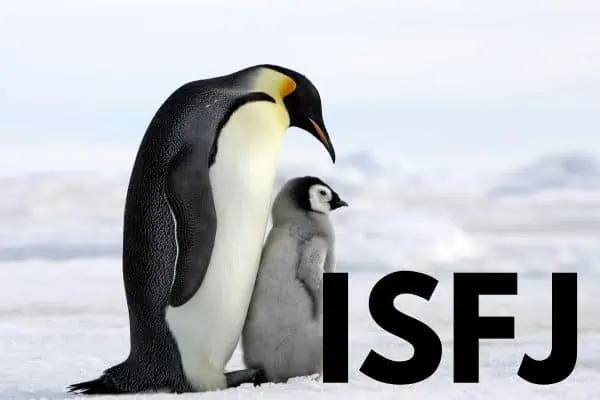
If ISFJs were sea creatures, they’d be penguins—steadfast, nurturing, and wired for community. Penguins survive the harshest conditions while protecting their families, sharing warmth, and rotating duties with clockwork precision. No drama. Just quiet, reliable care.
Like ISFJs, penguins show up. They put in the work to keep their world running smoothly—guarding the nest, taking care of the practicals, making sure nobody’s left behind. Their loyalty may not be loud and showy, but it’s unshakable. They know what needs doing and they do it, often without being asked.
Penguins are also devoted parents. They’ll go hungry to feed their chicks, face storms to keep them warm, and follow routines that ensure the survival of the next generation. It’s a perfect mirror of the ISFJ instinct to protect, provide, and keep life gently stitched together.
TL;DR – ISFJs and Penguins:
Loyal, steady, and deeply family-oriented.
Nurturers with strong instincts and serious staying power.
Find peace in routine and rhythm.
Keep the community warm, safe, and well-fed.
Lead with kindness and follow through with grit.
Discover more about ISFJs: 24 Signs That You’re an ISFJ, the Protector Personality Type
The INTJ – Octopus
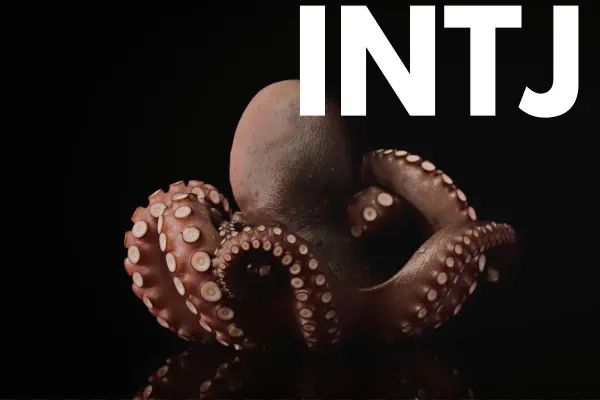
If INTJs were sea creatures, they’d be octopuses—solitary masterminds with an otherworldly kind of brilliance. Octopuses don’t just survive the ocean—they outthink it. Given a locked container, they’ll figure it out. Presented with a threat, they’ll vanish, shift color, or squirt ink and slip away like a phantom. Adaptation is strategy. Strategy is survival.
Like INTJs, they prefer to work alone. No underwater meetings. No social obligations. Just a deep, inner focus on what matters. They watch before they act. They plan five steps ahead. And when they finally move, it’s calculated and focused.
Octopuses can rewire their brains, slip through openings the size of a coin, and disguise themselves in a flash. It’s not for show. It’s function. Evolution sculpted them into something startlingly smart, and they use that intelligence to quietly dominate their environment—just like the INTJ, who would rather innovate in silence than explain themselves out loud.
TL;DR – INTJs and Octopuses:
Solitary thinkers with elite problem-solving instincts.
Observe everything, say little, act with precision.
Innovate quietly and shift tactics in real-time.
Prefer autonomy.
Masters of camouflage, strategy, and long-game thinking.
Want to find out more about INTJs? 24 Signs That You’re an INTJ, the Strategist Personality Type
The INFJ – Humpback Whale
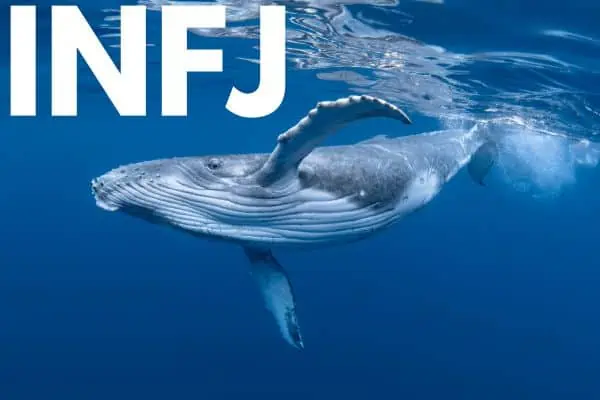
If INFJs were sea creatures, they’d be humpback whales—quiet wanderers, tuned to frequencies most others miss. These whales move through the world with intention. Long migrations, solitary paths, haunting songs echoing across miles of ocean—they carry a weight that feels ancient, like they’re holding something for the rest of us.
Like INFJs, humpbacks seem to know things without needing to explain them. They sing. They rescue. They navigate oceans with a sense of purpose that defies logic but somehow still works. Stories of humpbacks saving seals and humans from predators feel less like myth and more like a glimpse into something deeper—an instinct rooted in empathy, not survival.
They don’t live loudly, but they live meaningfully. Everything has a reason. Everything has a pattern. And even if no one else sees the full picture, the humpback keeps moving forward, guided by something internal, something ancient, something true. Just like the INFJ, charting a course few others can follow—but always one that matters.
TL;DR – INFJs and Humpback Whales:
Quiet, powerful, and deeply attuned to unseen connections.
Guided by inner vision, not external noise.
Communicate with depth, subtlety, and soul
Driven by purpose, empathy, and long-haul conviction.
Move through life like a pilgrimage—slow, steady, and sacred.
Find out more about INFJs: 24 Signs You’re an INFJ, the Mystic Personality Type
The ESTP – Sea Lion

If ESTPs were sea creatures, they’d be sea lions—bold, fast, loud, and always in motion. These are the thrill-seekers of the ocean. One minute they’re flipping through waves like Olympic gymnasts, the next they’re chasing each other just for the fun of it. Sea lions don’t wait for permission to enjoy life—they just go.
ESTPs are the same. I once worked with an ESTP client who casually told me he’d cliff-dived into the ocean on a dare, broke his toe on a rock, and still climbed back up to do it again. When I asked him why, he shrugged and said, “Felt like the right call at the time.” That tracks with my experiences with just about every ESTP I meet.
But don’t mistake all that fun for foolishness. Sea lions are smart. They solve problems fast—especially when there’s food involved or a predator on the scene. They read social dynamics in a flash, navigate chaos with ease, and always land on their flippers.
ESTPs have that same mix. They live fast, think faster, and somehow always manage to pull off the impossible while everyone else is still reading the instructions.
TL;DR – ESTPs and Sea Lions:
Bold, playful, and full of kinetic energy.
Thrive in chaos and high-speed problem-solving.
Socially sharp and instinctively strategic.
Don’t wait—they dive in.
Make life look like a game.
Find out more about ESTPs: 24 Signs That You’re an ESTP, the Daredevil Personality Type
The ESFP – Manta Ray
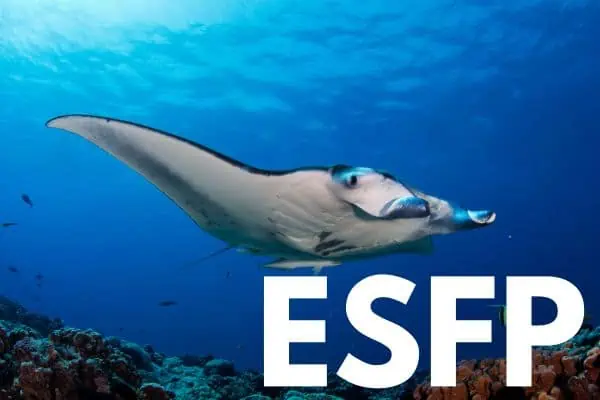
If ESFPs were sea creatures, they’d be manta rays—graceful showstoppers who turn swimming into an art form and turn heads wherever they go. Manta rays are social, curious, and totally unbothered by your personal space. Kind of like the ESFP friend who drags you onto the dance floor, talks to strangers like they’re lifelong friends, and somehow convinces you to go on a road trip you didn’t know you needed. There’s a magnetic pull to both—like they’ve found the secret to joy and you’re invited to come along.
But beneath the sparkle? Depth. Manta rays travel thousands of miles, exploring the wide open ocean like it’s a playground. Ultimately, they’re seekers. Much like ESFPs, who live for the moment and for the meaning tucked inside each new experience. They’re not afraid to dive in, try something new, or change course if it feels right.
TL;DR – ESFPs and Manta Rays:
Social, expressive, and radiant in motion.
Explore the world with curiosity, joy, and zero hesitation.
Draw people in with their presence—and take them somewhere unexpected.
Spontaneous souls with a strong inner compass.
The ENTP – Orca
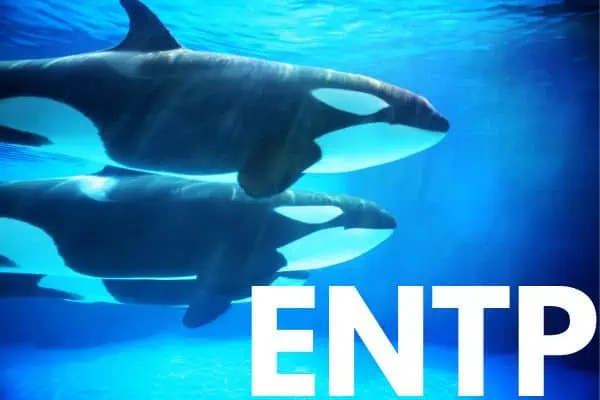
If ENTPs were sea creatures, they’d be orcas. No question. Big-brained, social, strategic, and slightly terrifying in their ability to outthink everyone else in the room—or ocean. Orcas don’t just swim around aimlessly. They hunt in packs, with tactics. Like, actual playbooks. One group will create waves to knock seals off ice floes, while the others wait to scoop them up. That’s ridiculously smart. It’s the same vibe as an ENTP running a group project: “Okay, you distract the professor with a philosophical debate while I rebuild the presentation in Canva.”
And they don’t do it alone. Orcas are chatty, collaborative, and constantly bouncing off each other—literally and socially. ENTPs are like that too. They build ideas with other people, mid-conversation, while juggling three other thoughts they might come back to later if they remember.
Also, orcas roam. Like, thousands of miles. They’re not content sitting in one place munching fish like some predictable dolphin. They’re exploring, playing, poking around, seeing what happens if they just try this one weird thing. Sound familiar?
TL;DR – ENTPs and Orcas:
Wicked smart with a love of chaos (the fun kind).
Social strategists who invent on the fly.
Thrive on collaboration, play, and clever solutions.
Never bored. Ever.
Discover more about ENTPs: A Look at the ENTP Leader
The ENFP – Dolphin
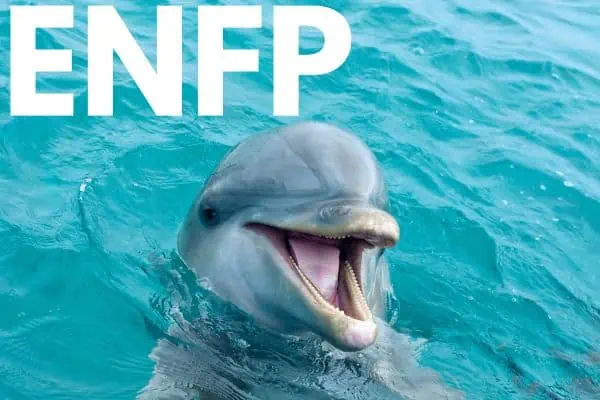
If ENFPs were sea creatures, they’d be dolphins—no contest. Bright-eyed, wildly curious, and always doing three things at once. These are the ocean’s extroverts, flipping through waves like, “Isn’t life amazing?” They team up and make a game out of hunting, or racing, or figuring out weird new tricks just because they can.
Like ENFPs, dolphins are happiest in groups—pods, technically—but really they just want connection, movement, and meaning. They’ll work together, communicate in high-speed clicks and whistles, and somehow still manage to look like they’re having the time of their lives. Even while solving problems. Even while saving someone. (And yeah, they’ve been known to save humans from sharks. Multiple times. Because of course they have.)
Dolphins are smart. Like, disturbingly smart. Mirror recognition, signature whistles (basically names), and a flair for improvising—walking on their tails, using mud clouds to trap fish, even teaming up with fishermen in Brazil to help herd fish into nets. ENFPs operate on that same wavelength: curious, idealistic, inventive, and maybe a little unpredictable in the best way.
TL;DR – ENFPs and Dolphins:
Playful, brilliant, and always up for something new.
Thrive in connection.
Overflowing with curiosity.
Creative to the point of inventing their own games.
Will probably save your life and make you smile while doing it.
Find out more about ENFPs here: 24 Signs That You’re an ENFP, The Visionary Personality Type
The ESTJ – Polar Bear
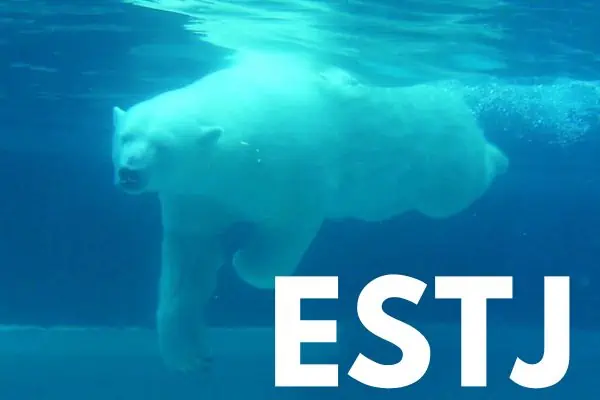
If ESTJs were animals of the sea (or ice, in this case), they’d be polar bears—tough, organized, and absolutely not here to mess around. Polar bears live in some of the harshest conditions on Earth, and yet they thrive. Why? Because they have a plan, they stick to it, and they don’t waste energy on anything that doesn’t matter. Sound like anyone you know?
Like ESTJs, polar bears are the kind of creatures that will wait for hours by a hole in the ice for the perfect moment to strike. They know the terrain, they remember where the fish were last season, and they don’t make the same mistake twice. It’s that mix of memory + precision + sheer willpower that gets them results. ESTJs are built the same way—they set a goal, create a system, and keep moving until it’s done (and done right).
They also don’t exactly blend in. Polar bears are big. Powerful. They command attention just by showing up. And ESTJs tend to take up that same kind of space—whether they mean to or not. They naturally fall into leadership roles because they’re the ones making the plans, scheduling the meetings, and reminding you your deadline was yesterday.
But here’s the twist people forget: polar bears can be surprisingly playful. They roll in the snow, wrestle with each other, and have been known to just vibe with random sled dogs for no obvious reason. ESTJs, under the surface of “get-it-done” energy, have that same unexpected warmth. If you’re in their circle, they’ll make you laugh, show up for you without question, and throw themselves into fun just as fiercely as they tackle work.
TL;DR – ESTJs and Polar Bears:
Resilient, focused, and built for challenge.
Strategic hunters (or planners) with sharp instincts and a good memory
Natural leaders who take up space.
Surprisingly playful once the work is done.
Will absolutely make you laugh… right after making you hit your deadline.
Discover more about ESTJs: 10 Amazing ESTJ Anime Characters
The ESFJ – Atlantic Puffin
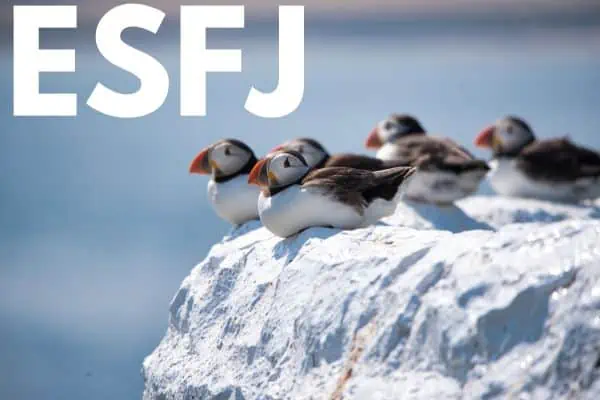
If ESFJs were sea creatures, they’d be Atlantic puffins—loyal, social, organized little dynamos who somehow manage to be both adorable and impressively capable at the same time.
Puffins live double lives. Most of the year they’re off doing their own thing at sea, but when nesting season comes around? It’s full-on community mode. They return every single year to the same nesting site and the same mate. Talk about loyalty. That kind of commitment reminds me so much of the ESFJs I’ve known—always showing up for the people they love, keeping traditions alive, and remembering birthdays even when the rest of us forget our own.
And puffins aren’t just about feelings and fluffy feathers. They’re clever. They’ve been seen using sticks to scratch hard-to-reach itches and holding a whole row of fish crosswise in their beaks—because why make two trips when you can plan ahead and do one? I once had an ESFJ friend who made a birthday gift out of recycled packaging, scrap fabric, and a handful of buttons—and it somehow looked like it came from Anthropologie. That kind of practical creativity? Pure puffin.
They’re also ridiculously tidy. Puffins build clean, organized burrows for their families, even designating separate spots for waste so the nest stays fresh. If you’ve ever watched an ESFJ host a dinner party or run a classroom, it’s the same energy—everything’s thoughtful, well-planned, and done with love.
TL;DR – ESFJs and Puffins:
Loyal to their people and traditions.
Social, heart-centered, and rooted in community.
Creative problem-solvers with a practical streak.
Make life better just by caring the way they do.
Find out more about ESFJs: 24 Signs That You’re an ESFJ, the Defender Personality Type
The ENTJ – Great White Shark

If ENTJs were sea creatures, they’d be Great White Sharks. These creatures are all about forward motion and razor–sharp strategy. They plan. They stalk. They wait for the right moment—and then they strike with forethought.
ENTJs move through life the same way. They don’t wander into things. They size up the situation, gather intel, and then go after their goal like it’s already theirs. I once coached an ENTJ who decided she was going to switch careers, mapped out a six-month plan, networked, and landed a dream role in four. They don’t just brainstorm and play with ideas—they execute and make their vision a reality.
And just like Great Whites, ENTJs aren’t loners. Sure, they like control, but they also know the value of working with a team—especially if that team is sharp, efficient, and moving in the same direction. Sharks are sometimes seen cruising in pairs or small groups, probably discussing KPI metrics in fish-language.
TL;DR – ENTJs and Great White Sharks:
Fearless leaders.
Thrive on challenges, goals, and execution.
Command respect just by showing up.
Collaborative when it counts—especially with high-performers.
Built for efficiency, dominance, and getting the job done
The ENFJ – Beluga Whale
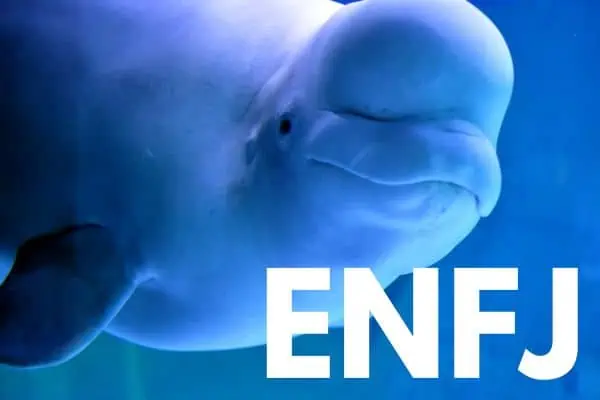
If ENFJs were sea creatures, they’d be beluga whales—expressive, emotionally tuned-in, and kind of impossible not to love. Belugas are known as the “canaries of the sea” because they have a huge vocal range and use it to connect, comfort, and collaborate.
Like ENFJs, belugas are communication pros. They shift their tone and style to whoever they’re with, always reading the room (or ocean) and adjusting to meet the emotional needs of the moment. I’ve worked with ENFJs who could walk into a room full of tension and somehow, by the end of the hour, everyone’s smiling and working together again. No one else even saw what was wrong. The ENFJ just knew.
Belugas also live in close-knit pods and are constantly looking out for each other. They’ll circle around injured members, help calves breathe by pushing them to the surface, and coordinate care in a way that feels almost human. That sense of collective responsibility? That’s exactly how ENFJs lead—by nurturing. By believing in people. By keeping the group together through storms.
TL;DR – ENFJs and Beluga Whales:
Communicators who lead with warmth, empathy, and insight.
Natural unifiers who adapt to the emotional needs of the group.
Deeply social and wired for harmony.
Protective, nurturing, and the first to show up when someone’s struggling.
Feel everything—but use that insight to bring people together
Discover more about ENFJs: 24 Signs That You’re an ENFJ, the Mentor Personality Type
What Are Your Thoughts?
We would love to hear your thoughts on this comparison between Myers-Briggs personality types and sea creatures! Does your sea creature feel like you? Or do you see yourself in a different sea creature? Let’s keep the conversation going! Share your opinions and thoughts in the comments below.
Find out more about your personality type in our eBooks, Discovering You: Unlocking the Power of Personality Type, The INFJ – Understanding the Mystic, The INTJ – Understanding the Strategist, and The INFP – Understanding the Dreamer. You can also connect with me via Facebook, Instagram, or YouTube!
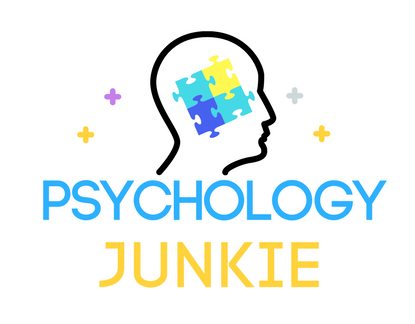

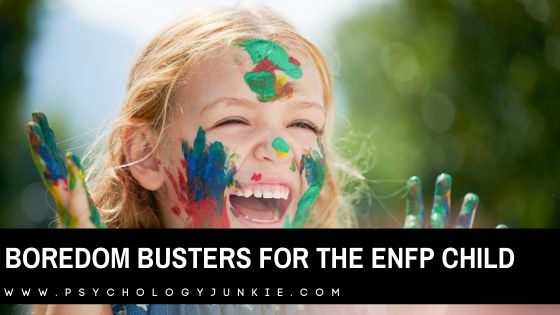





INFJ here. . . . was initially a little surprised to see Humpback Whale, but the description was really spot on. Loved it!
Hi Susan,Ohh so cool !I would love to be a Leafy Green Dragon. I’m a ISFP and all you shared about me as a Leafy Green Dragon is so much like me . I’ll never stop be amazed at all you do and share with us .Thanks from Beverly the Leafy Green Dragon .